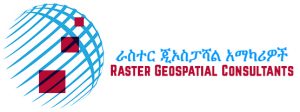Infrastructure
Geospatial information system has strong applications in infrastructure information capture, management, analysis and mapping.
Just to mention some Applications:
- Transportation: One of the fast growing sectors in Ethiopia is transportation. As geospatial consultants we see the following major areas of strong applications. Route selection and Design, Connectivity and traffic Flow, Network Analysis, GPS Tracking/Guide, Accident red spot Analysis and System Development.
- Telecommunication: GIS has strong analytical capabilities of ground information. In telecom for instance, tower installation site selection, signal strength analysis, optimal distance, in-out call information capture and analysis, spatial customer information, location based trend analysis, and many others are possible with GIS. Modeling surface and sub surface spatial networks and cable mapping is also possible.
- Power Consumption: In power generation, transportation and consumption geospatial information systems have very good capabilities. Sites for potential power installation can be identified by making use of Images and digital elevation models. For wind energy for instance best sites can be identified and ranked. Efficient route for transporting power from source to destinations can be selected. I consumption analysis we can make use of GIS to identify high, medium and low usage areas. We can also create location based demand supply analysis of the present and the future. Surface and sub surface cable networks can high power storage sites can also be mapped.
- Sewerage Networks: In this regard sewerage lines in surface and sub surface can be modeled and stored in a geo-database. GIS is a good tool in network analysis and help us understand the spatial efficiency of the exiting networks. This help us to get information on the need for repair, change, upgrade or else. In this aspect it is possible to make useful applications related to contamination.
- Road networks: Rural-Urban or Urban-urban connectivity analysis is possible by making use of geo referenced spatial data. We are experts on all GIS applications related to accessibility analysis. We have data on road networks for many parts of Ethiopia.
- Facilities: Geospatial information systems effectively handle information on facility distribution, density, cluster, and accessibility. Facility-population proportion information can also be generated to help decision and policy makers. We also work on accessibility modeling to different locations like Water points, health facilities, schools, and many others.
We are dedicated geo-information analysts to help you make spatial knowledge based decisions in your projects.

